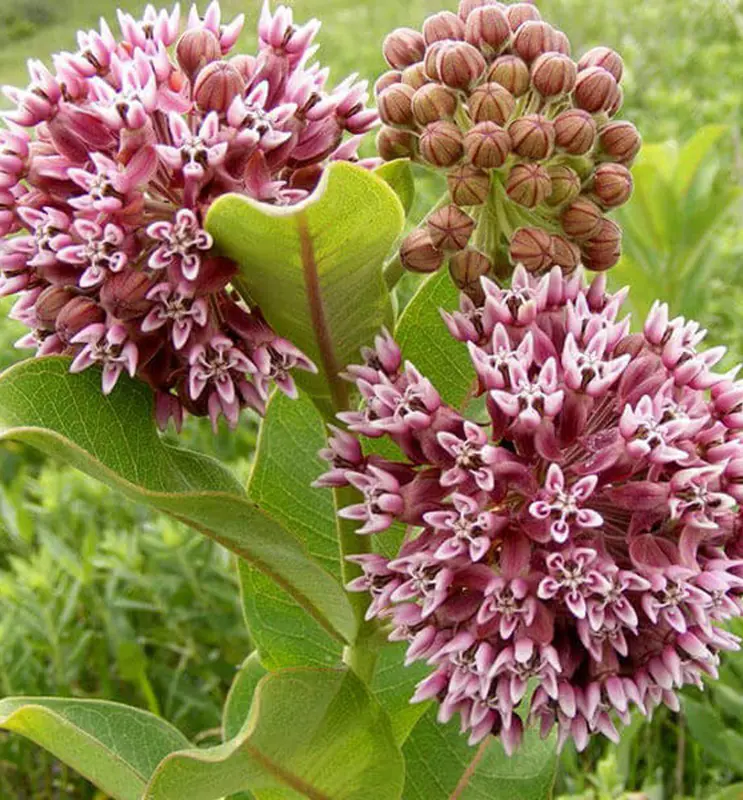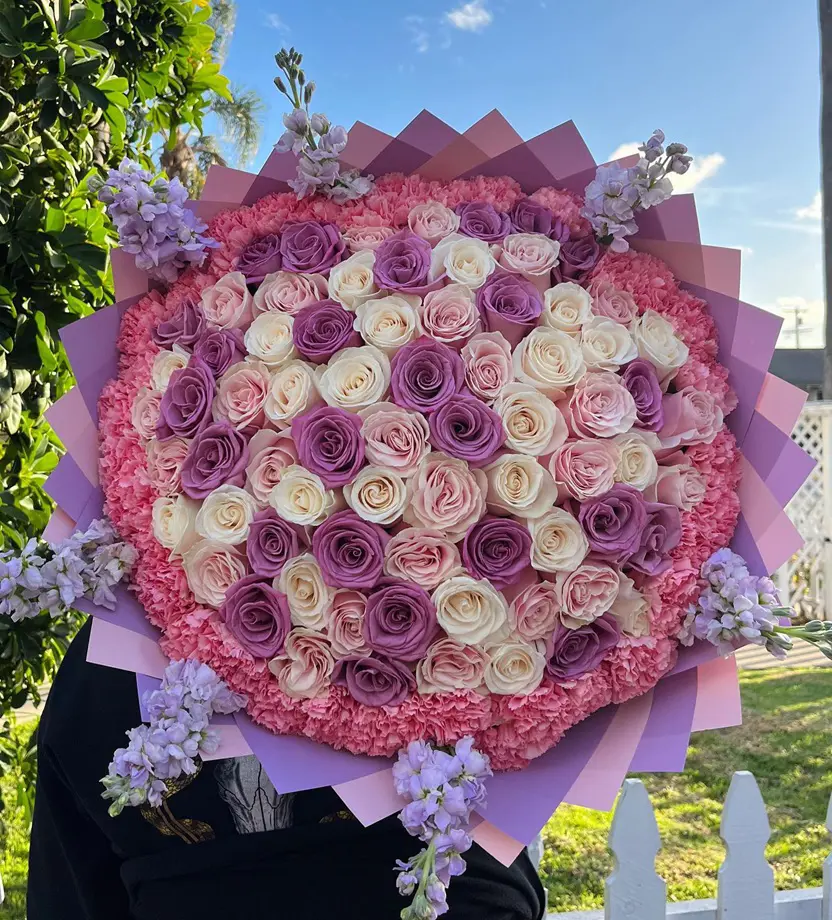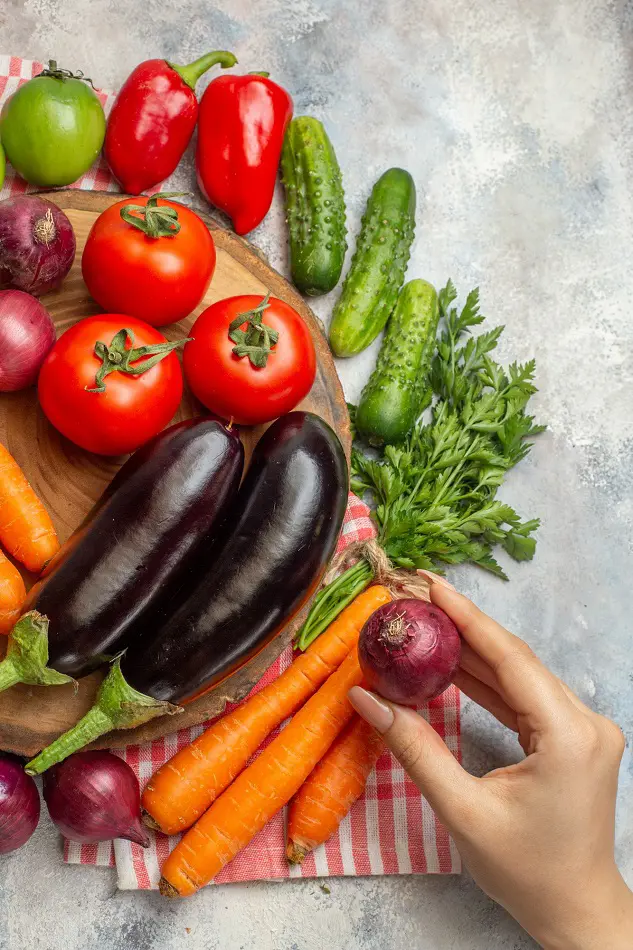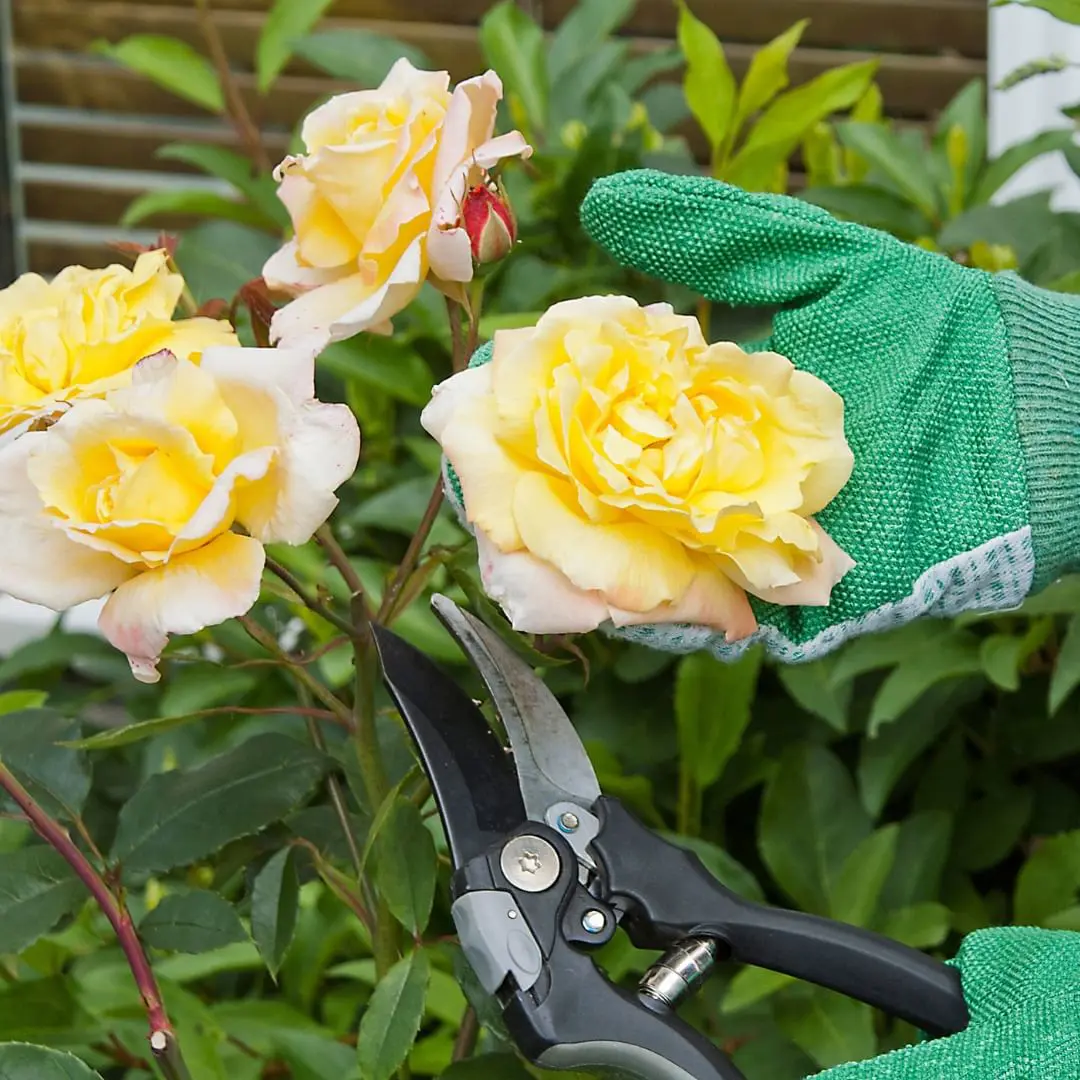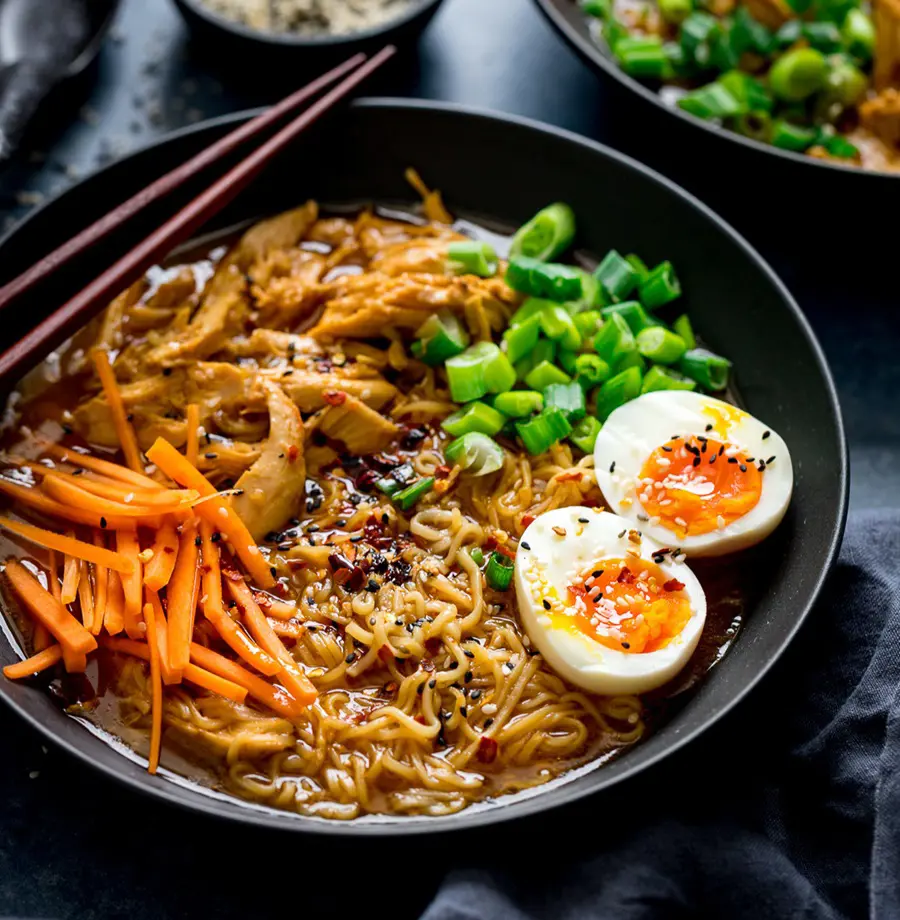Care Tips For Lavender Plant

This post may contain affiliate links. If you make a purchase through links on our site, we may earn a commission.
Lavender is a beautiful and fragrant plant that can add a touch of elegance to any indoor or outdoor space. Growing this flower in your living area can create a visually appealing environment that is both calming and joyful.
With its delicate purple flowers and soothing scent, lavender is a popular choice for those looking to add a touch of nature to their surroundings.
About Lavender
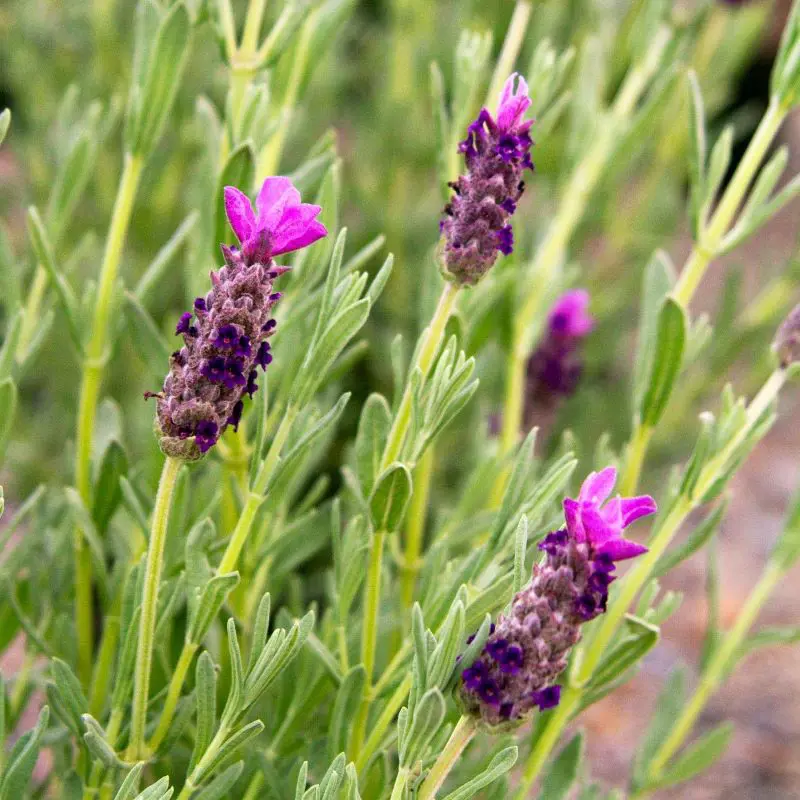
Lavender plants are typically small evergreen shrubs with gray-green, hoary linear leaves. They are known for their fragrant purple flowers, which are sparsely arranged on spikes at the tips of long, bare stalks. The pleasant scent of these flowers emanates from oil glands among tiny, star-shaped hairs covering the flowers, leaves, and stems.
These plants are widely cultivated for their essential oils, which are used in a variety of products, including perfumes, soaps, and cosmetics. The dried flowers are also used in sachets to scent chests and closets, and the ancient Romans used lavender in their baths.
- Botanical Name: Lavandula
- Family: Lamiaceae: the mint family
- Plant Type: Perennial shrub
- Water Needs: Low
- Sun Exposure: Full
- Soil Type: Loam, Sand
- Soil pH: Acid, neutral, alkaline
- Soil Drainage: Well-drained
- Tolerance: Rocky soil, dry soil, drought
How To Grow Lavender
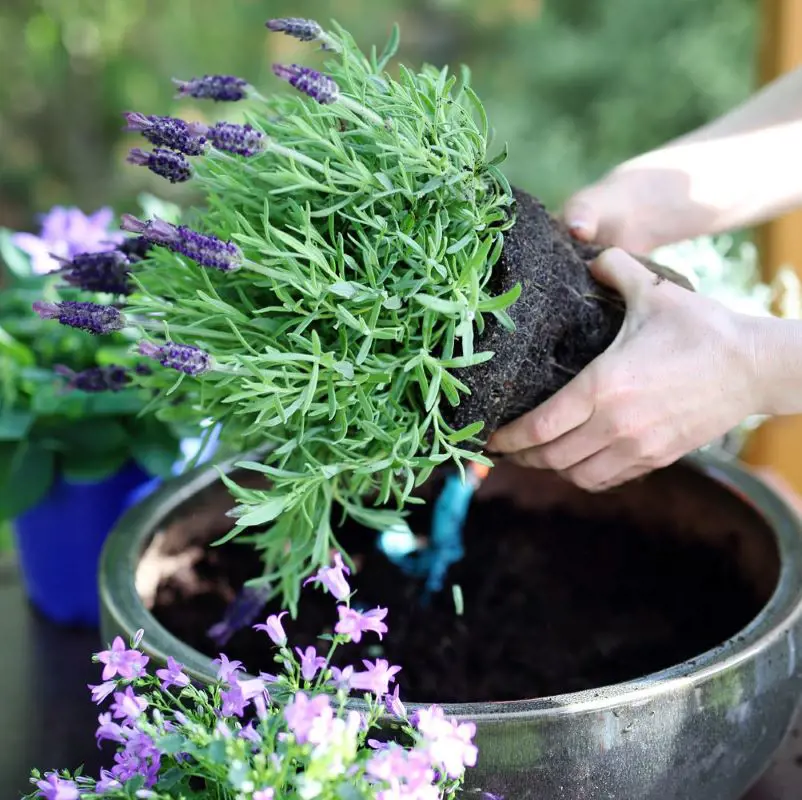
Growing lavender can be done from seeds or cuttings, but it is generally easier to cultivate from seedlings or established plants. If you choose to grow from seeds, it is best to start them indoors and then transplant the seedlings outdoors once they are established.
However, the most common method for growing this plant is from cuttings or small plants for better results.
Varieties of Lavender
Lavender is a genus of approximately 40 species of flowering plants in the mint family Lamiaceae. Native to the Mediterranean, these flowers are also primarily found in India and Africa. In this discussion, we will explore three main varieties of this flower.
English lavender
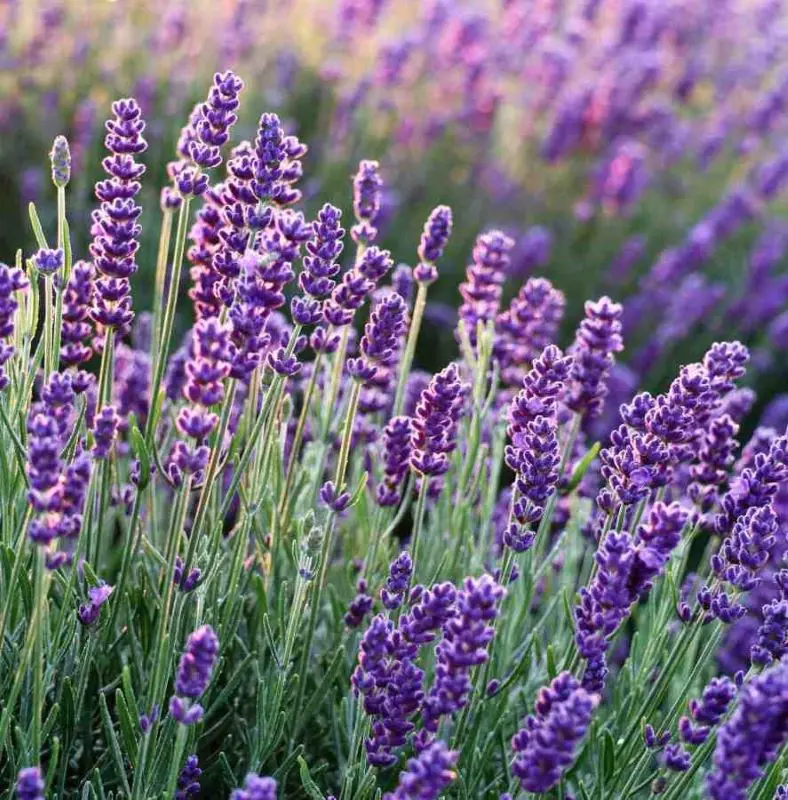
This is the most common type of lavender and is known for its delicate, sweet scent. The plant grows to about 2 to 3 feet tall and has narrow, silvery-green leaves. Its flowers are typically pale purple or blue, but there are also white and pink varieties. English lavender is hardy in zones 5-8.
Spanish lavender
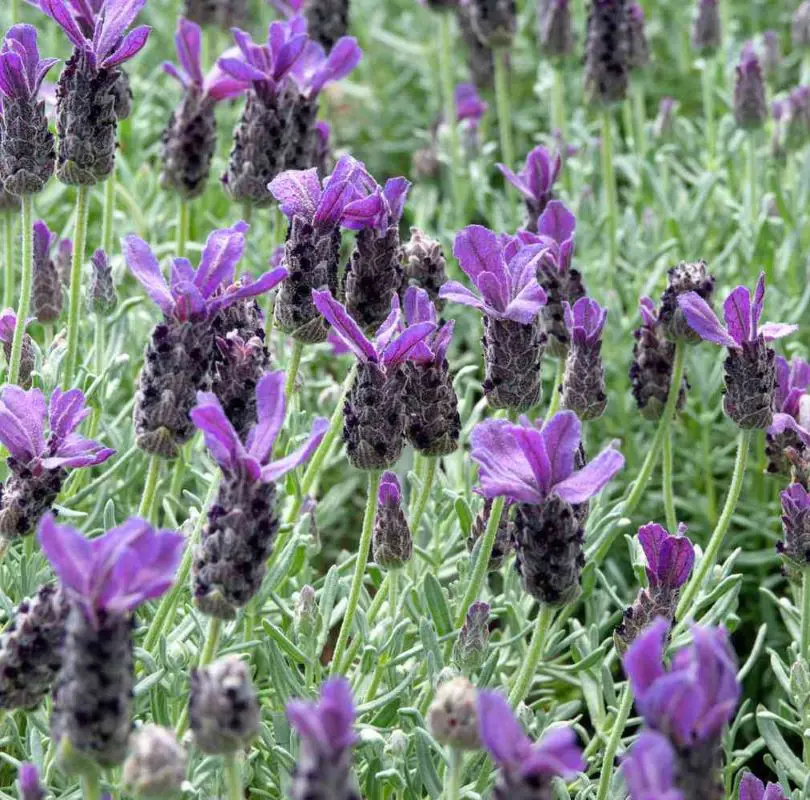
This type of lavender is larger than English lavender, growing up to 6 feet tall. It has broader leaves and larger flowers, which are usually a deep purple or violet. Spanish lavender is not as cold-hardy as English lavender and is only hardy in zones 8-10.
Lavandin
Lavandin is a hybrid of English lavender and Spanish lavender. It is the most commercially important type of lavender, as it produces the highest yields of essential oil. Lavandin is also more disease-resistant than other types of lavender. It grows to about 3-4 feet tall and has flowers that are typically a bright blue or purple. Lavandin is hardy in zones 5-8.
Which Varieties Should I Choose To Grow?
When choosing varieties of lavender to grow in your yard, it is important to consider your climate, soil type, and how you plan to use the plant. For instance, if you live in a cold climate, you will need to choose a cold-hardy variety.
If your goal is to produce your own essential oil, opt for a variety that is high in essential oil content. Similarly, if you intend to use lavender for dried arrangements, select a variety with long-lasting flowers.
How To Care For Lavender
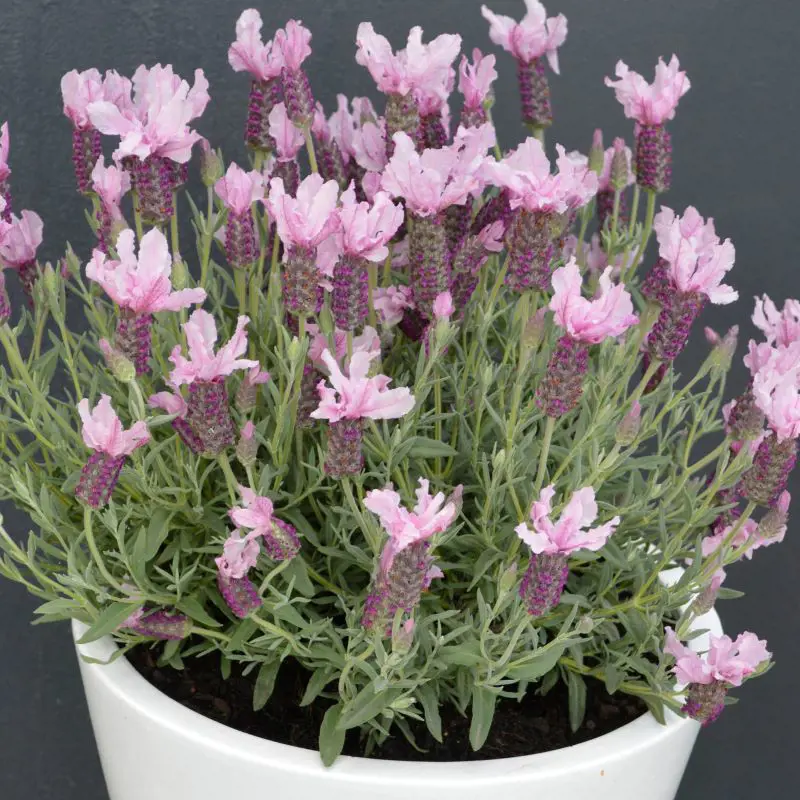
These beautiful and versatile plants can be enjoyed both indoors and outdoors. With its fragrant flowers and silvery-green foliage, it adds a touch of elegance to any space. But like any other plant, this herb needs proper care to thrive. Here are some tips for keeping your lavender plant happy and healthy.
Provide Full Sun Exposure
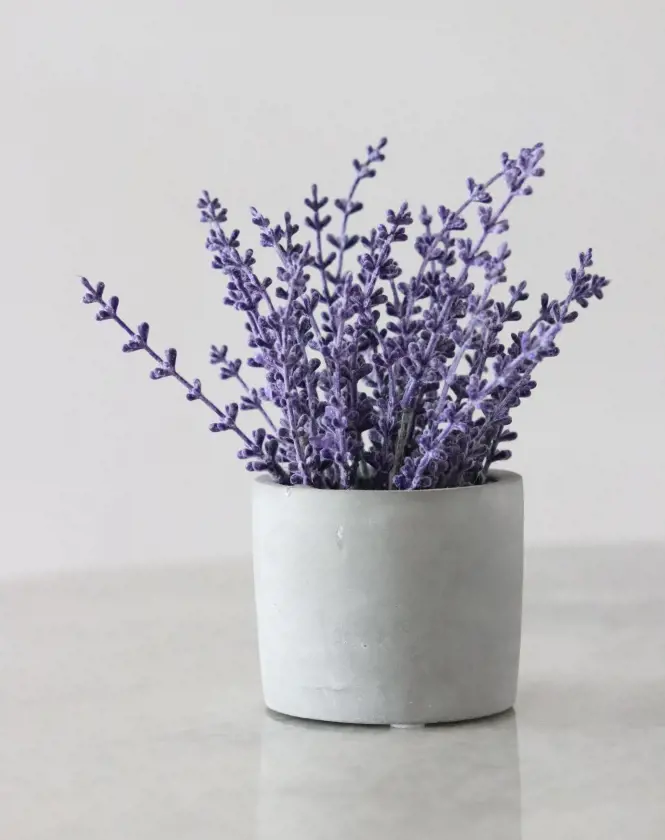
Lavender loves the sun! Aim for at least 6 hours of direct sunlight per day, whether you're growing it indoors or outdoors. If your lavender is placed outdoors, do not shade it from structures like buildings or tall trees, as they may hinder the sunlight exposure it gets.
Moreover, insufficient sunlight can lead to leggy growth and a lack of flowering in indoor lavender plants. If your indoor lavender is displaying these symptoms, it may be due to limited light. To compensate for this, the use of grow lights can be beneficial in supporting its growth and blooming.
Soil
These plants prefer well-draining soil as they are sensitive to soggy roots. Their ideal soil types are sandy or loam, but you can also amend clay soil with compost or sand to improve drainage. You may also build DIY garden-raised beds to ensure proper drainage and enhance their health and growth.
Water Your Lavender
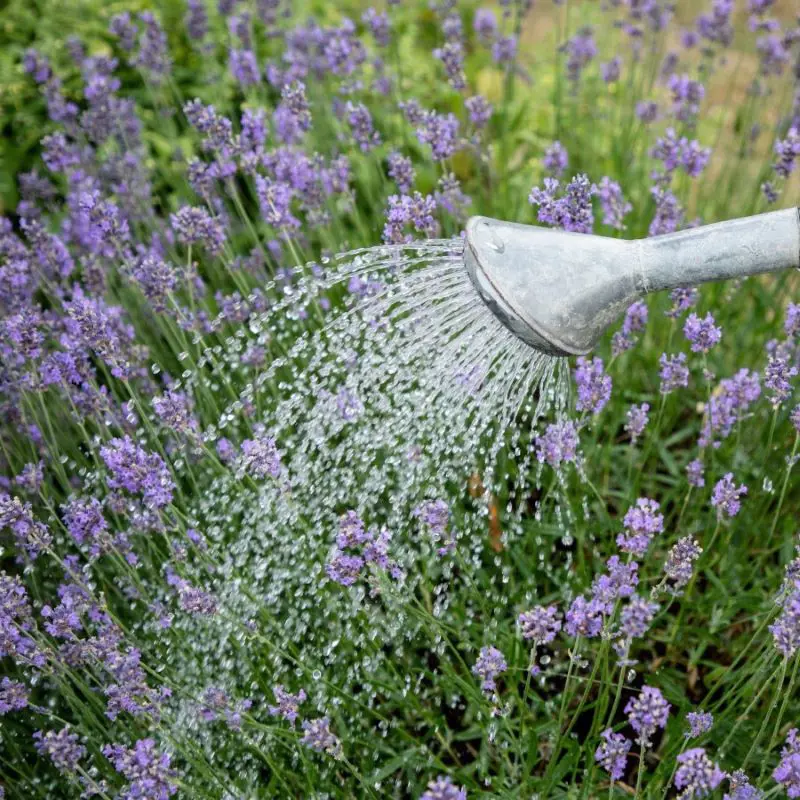
Lavender is a drought-tolerant plant, so it's better to underwater than overwater. Allow the soil to dry out completely between waterings. During the summer, water them more frequently, especially for potted lavender. In winter, you may water occasionally, perhaps twice a week.
But if your lavender is indoors, water them sparingly to make certain that the soil dries out between each watering session. This prevents root rot and reduces the chance of spreading disease.
Fertilizing
These plants do not require much fertilizer, especially if you have grown them in well-amended soil. However, the best time to feed them is in the spring at the start of the growing season. Applying a small amount of slow-release fertilizer or placing an inch of good compost around the plant should provide ample nutrients for the coming year.
Lavender prefers nutrient-poor soil, so avoid fertilizing it too heavily, as this may cause excess foliage growth and prevent flowering. Choose a balanced fertilizer that is lower in nitrogen content and higher in phosphorus and potassium, with an N-P-K ratio of 5-10-10 or 10-20-20.
Pruning Lavender
The best time to prune this plant is in late summer or early fall, after the flowers have faded. This timing allows the plant to recover and put on new growth before winter. You may also give your lavender a light trim in the spring, just before new growth starts. This will help to remove any dead or damaged wood.
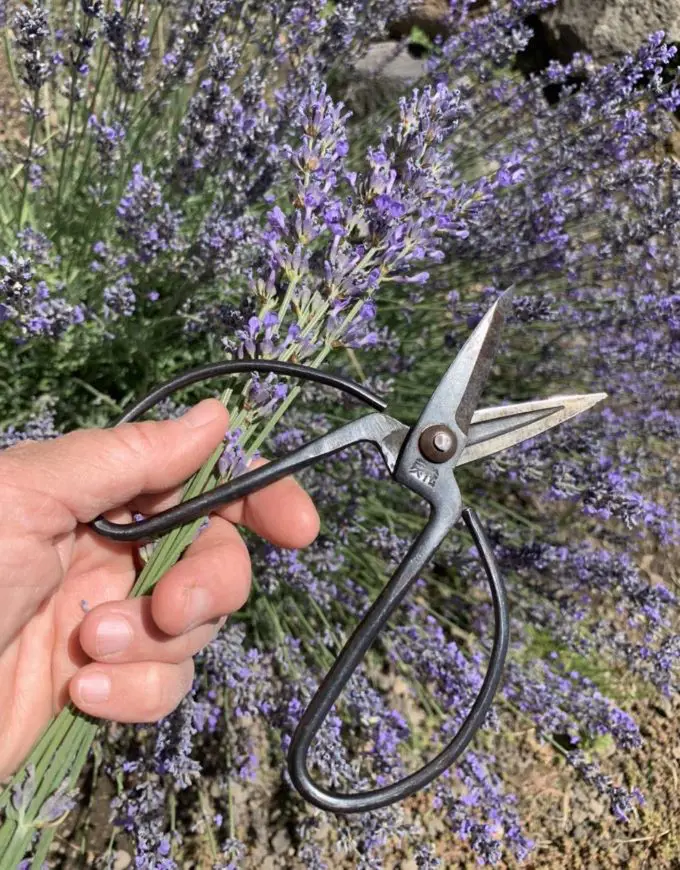
How to prune lavender?
- Use sharp, clean pruners or shears.
- Make angled cuts just above a leaf node.
- Don't cut into the woody stems.
- Trim on a dry day to prevent disease.
- After pruning, apply a light mulch around the base of the plant to help retain moisture.
Mulching
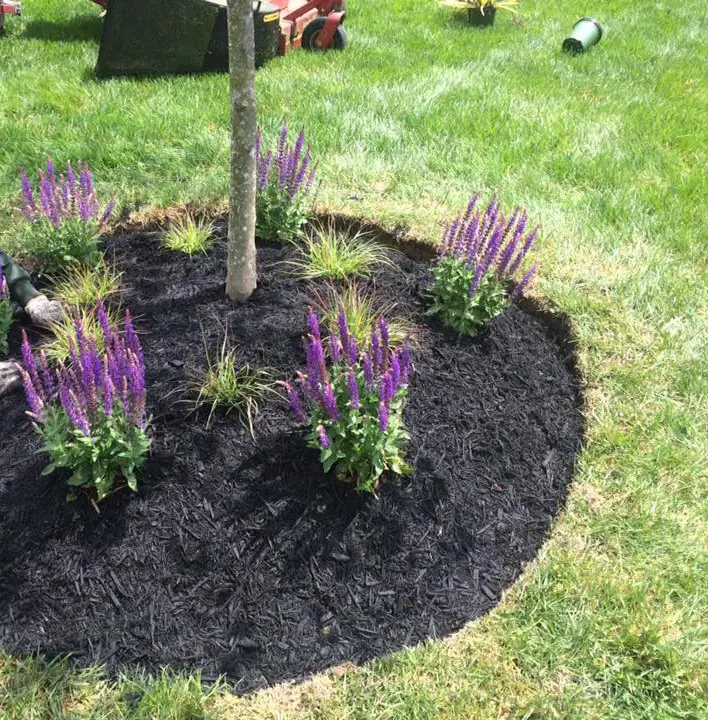
To mulch lavender, apply a 1 to 2 inch layer of small crushed gravel, pine needles, or crushed nutshells around the base of the plant. Avoid water-retentive mulch materials like straw, bark, and compost. This helps retain moisture, suppress weeds, and keep the foliage and crown dry, promoting healthy growth, especially for young plants.
Pest Control
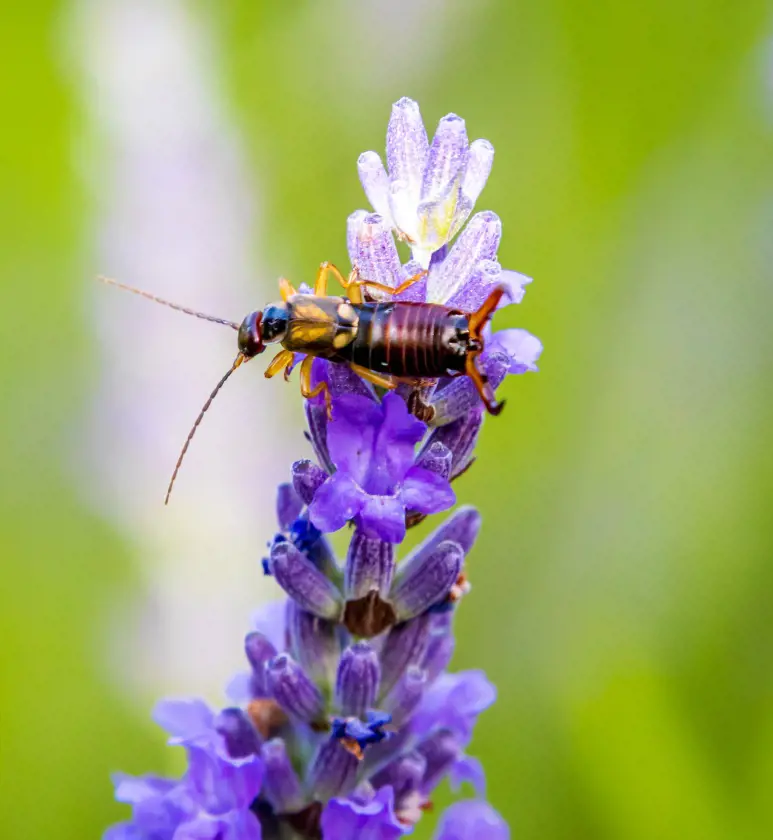
Although lavender is relatively pest- and disease-resistant, it can still be susceptible to aphids, mealybugs, and other fungal diseases. If you observe any of these pests or diseases, you can treat them with insecticidal soap or neem oil.
Harvesting
You can harvest lavender when its flowers are in full bloom, typically in early to mid-spring. Cut the stems just below the flower heads and gather the flowers with the buds clustered together. It is best to harvest them in the early morning to preserve the highest concentration of oils. These freshly picked flowers can be used to make sachets, potpourri, or tea. Alternatively, you can dry the flowers for later use.
Lavender Plant Care Indoor
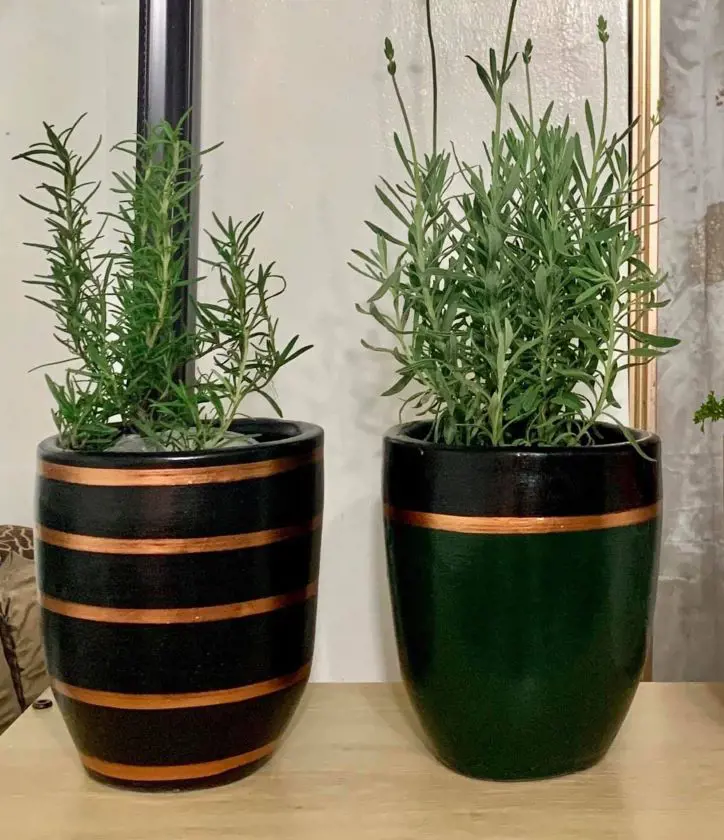
Both indoor and outdoor-grown lavender can be cared for as mentioned above. Still, if you want specific caring tips for your indoor-grown lavender, here are some suggestions.
- Choose a sunny spot, especially a south-facing window, as it is ideal.
- Use a container with proper drainage holes. You can also add some sand or perlite to the potting mix to improve drainage.
- Water them when the top inch of soil is dry. Do not overwater.
- Fertilize your plant once a month during their growing season with a half-strength liquid fertilizer.
- Prune your lavender after the flowers have faded. You can also pinch back the stem tips to encourage bushier growth.
Recent posts
Gardening
Gardening
How To Grow Grass From Seed? Planting And Caring Guide
Growing grass seems like an easy task. But the ones who are already into it know how much work and patience is required for its maintenance, to transform the outdoor space into a lush, green oasis. For beginners who are starting from scratch or someo...
Gardening
How To Grow, Plant And Care Milkweed From Seed
Planting milkweed from seed is one of the most satisfactory practices. It not only adds value to your garden aesthetics but also contributes essential instinct pollinators, including monarch butterflies. Many milkweed seeds germinate best when expos...
Gardening
18 Rose Colors And Their Meanings
Roses are not only elegant flowers but they also represent something more profound. Every color of a rose has its special meaning, making it a powerful tool when it comes to conveying messages in personal relationships and occasions. Ranging fr...
Gardening
When To Plant Vegetables – A Month By Month Calendar
Understanding when to plant vegetables is essential to successful gardening as timing alone can greatly affect the productivity and health of vegetables. A month-by-month planting calendar is useful because not every month is ideal for a specific pro...
Gardening
How To Prune Hydrangeas So That It Stays Healthy
The name hydrangea conjures clusters of flowers packed densely. Hydrangeas can grow in both old and old wood, and depending on the varieties, pruning time may differ. Pruning hydrangeas is a fundamental practice for gardeners wanting to maintain thei...
Gardening
How To Prune Roses With These 10 Steps
Pruning these thorn-filled plants might seem scary, but it's crucial for having abundant rose blooms. Cutting back old growth encourages new, vibrant growth, removes dead parts, and shapes the plant. This practice also reduces the risk of fungal dise...

